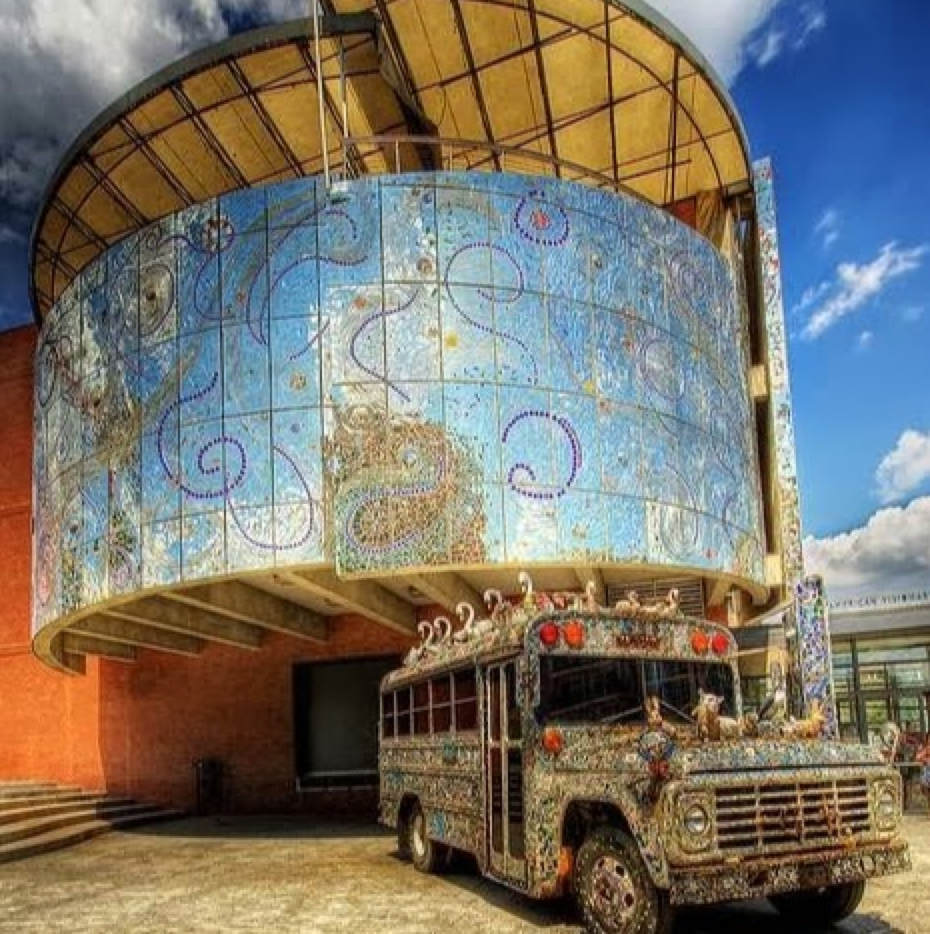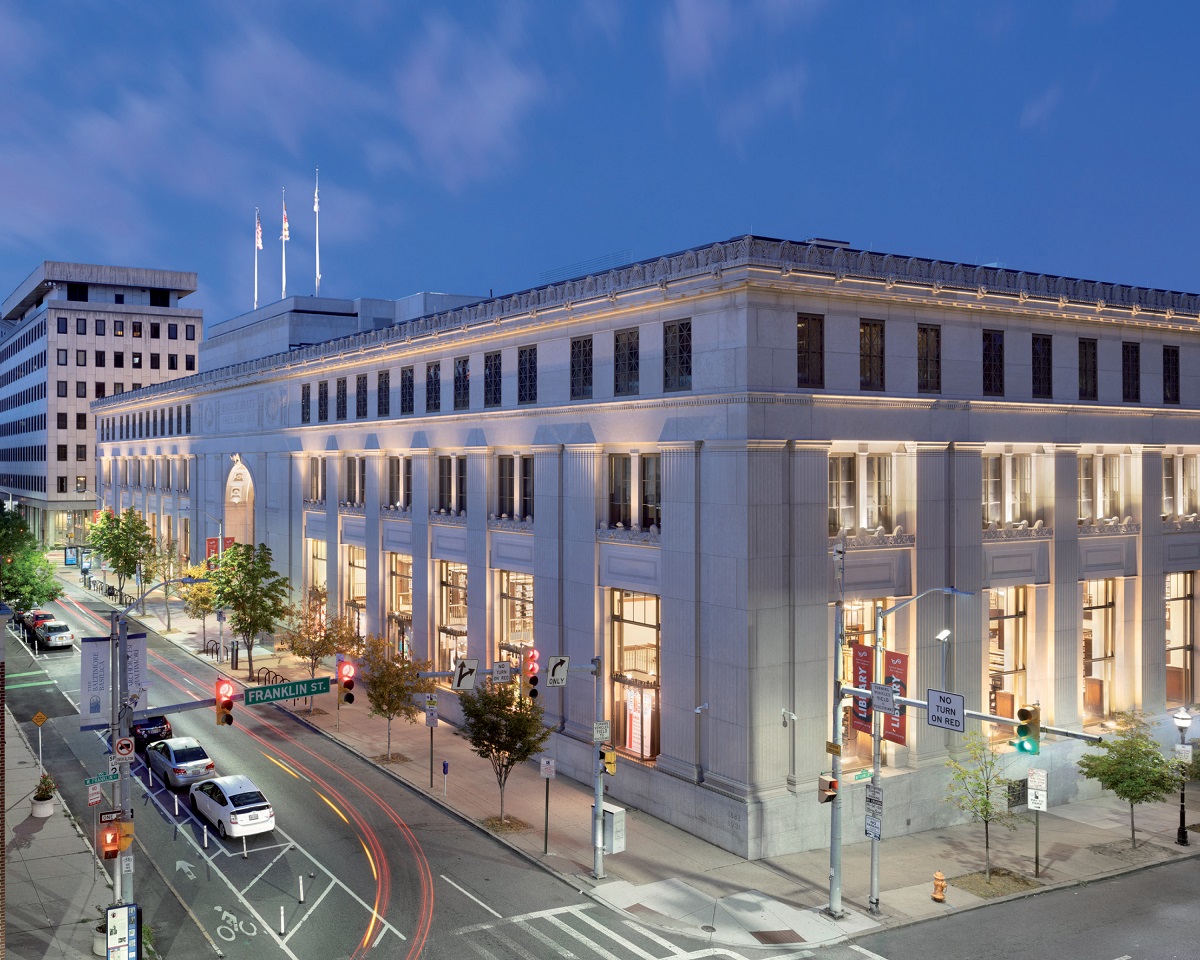
Photograph Courtesy of The American Visionary Arts Museum
American Visionary Art Museum
Alex Castro, Rebecca Swanston,
and Davis, Bowen & Friedel (1995) Diane Cho (2004)
The American Visionary Art Museum is a brilliant example of sculptural expression. Architect Rebecca Swanston and artist Alex Castro incorporated the curving Trolley Works building and enlarged it with an addition that echoes its curves and creates a strong sense of motion. It’s playful, eye-catching facade expresses the artworks to be found inside by self-taught individuals that make AVAM one of the city’s most beloved institutions.

Photography Credit: Pratt Library (Joseph Romeo)
Enoch Pratt Central Library
Clyde Friz (1933)
From Explore Baltimore Heritage:
“The construction of the current central library building on Cathedral Street began in 1931 and was completed in 1933. Architect Clyde N. Friz hoped to avoid the old-fashioned institutional character of the past in his design and instead to give the library “a dignity characterized by friendliness rather than aloofness…Although allowing for expansion, the design of the new building retained one of Pratt’s steadfast requirements: that there be no stairs leading into the main entrance. This seemingly odd requirement, and one that certainly went against the grain of architectural design for grand civic institutions at the time, was based on Pratt’s philosophy that the library should be open to all people.”